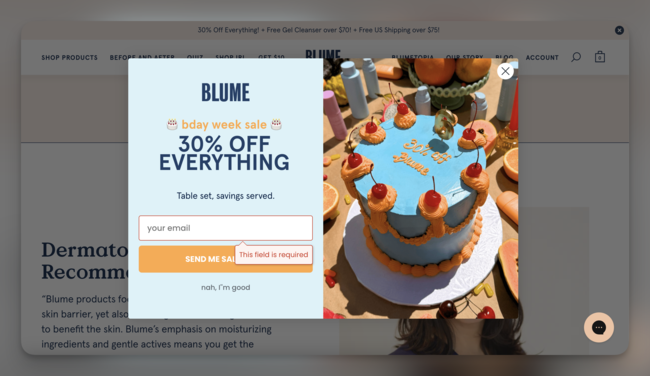Hey Amari! FOMO (Fear Of Missing Out) tactics can be incredibly powerful tools in marketing.
Research shows that a significant portion of consumers, around 60%, have made purchases driven by FOMO (Fear of Missing Out). This statistic highlights the power of FOMO in influencing buying decisions, particularly within a 24-hour window of encountering an offer.
Apart from this statistic about the exact percentage of people shopping due to FOMO, several studies solidify this idea by offering valuable insight into its impact. Let’s have a look;
Debt and Social Comparison: A significant number of young adults (nearly 40%, according to a study) have fallen into debt trying to keep up with the lifestyles portrayed on social media and online marketing, highlighting the fear of missing out.
Impulse Purchases on Social Media: Bankrate’s survey shows that 2 in 5 social media users make impulsive purchases due to FOMO triggered by their feeds.
Loyalty Programs and Scarcity: The surge in searches for loyalty programs suggests that people are drawn to exclusive deals and rewards, fearing missing out on potential savings (Google Internal Data).
The above FOMO statistics demonstrate the significant impact FOMO has on shopping behavior. So, how can you leverage this? By the way, it’s so true that limited stock popups and countdowns can be highly effective. Let’s jump into this in more detail:
- Limited-time Offers: Create a sense of urgency with limited-time discounts or promotions.
- Limited Stock Popups: Highlight limited product availability to make them seem more desirable.
- Free Shipping with a Minimum Purchase: Motivate larger purchases by offering free shipping only if they reach a certain amount.
Here is an example of limited time offer popup from Blume:

You can create such a popup for free with Popupsmart, I recommend you take a look.
Here are some tips for implementing FOMO tactics well:
->Focus on Value, Not Just Urgency: Don’t pressure customers solely on limited time. Highlight the product’s value and benefits they’ll miss out on.
->Avoid Manipulative Tactics: Don’t create fake scarcity or misleading countdowns, as this can damage trust with your customers.
->Balance Urgency with Positive Emotions: Frame your offers in an exciting way, like “Don’t miss out on this amazing opportunity!” instead of just focusing on scarcity.
By using FOMO tactics thoughtfully, you can encourage customers to take action without compromising trust or resorting to manipulation.
